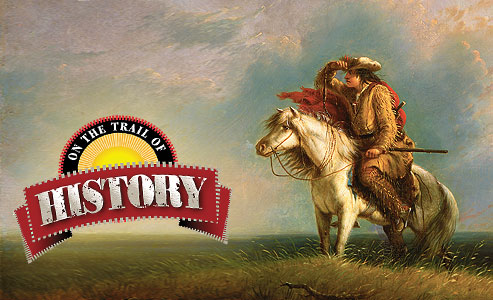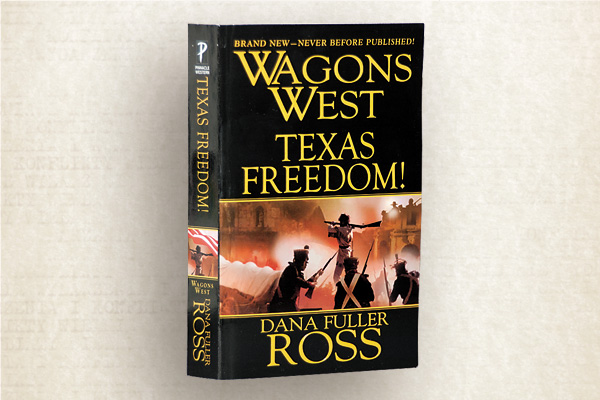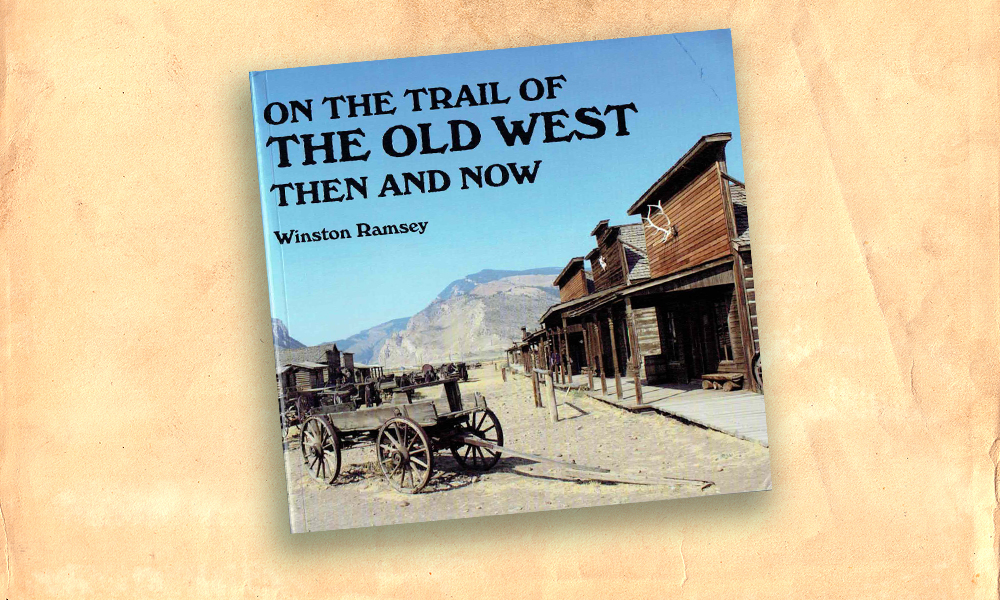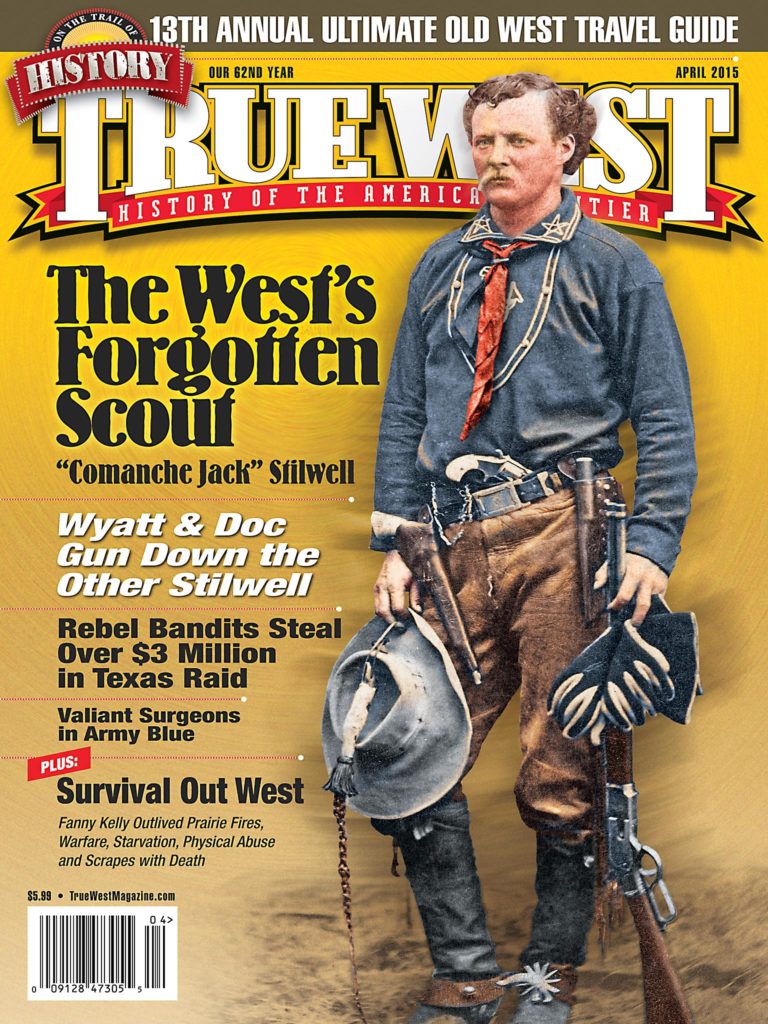Wyatt Earp’s Kansas
The famed lawmanís life on the edge of law and order can be discovered in the Sunflower State.
By Max McCoy
Before his starring role in the most famous gunfight in history, and long before a bestselling but semi-fictional biography would kick off a cycle of films portraying him as the quintessential Western lawman, Wyatt Earp made his way across Kansas.
It was a nine-year journey that would take him to just about every populated corner of the Sunflower State, and lead to a few out-of-state dead ends. The (possibly) grief-stricken young man who might have flirted with a life of serious crime would mature into a seasoned lawman with a reputation for toughness—and a taste for sin.
In Kansas, Earp would dwell in the swale of respectability, especially the gambling houses and brothels, and cement a friendship with a peripatetic dentist and inveterate gambler named Doc Holliday. Two years after leaving Kansas, Earp would walk into the gunfight behind the O.K. Corral, Holliday at his side, with a nerve forged by a life lived under the shadow of death in wide-open cattle towns across the state.
Let us now retrace, in a meandering 741-mile journey across the state, the Kansas that Wyatt knew, and search for the man behind the legend along the way.
Fort Scott to Coffeyville, 102 miles
Wyatt’s first job as a lawman was in Lamar, Missouri, just across the border from Fort Scott. Born in Illinois in 1848, Earp was the fourth son of a traveling family, who in a few years would migrate from Iowa to California. Eventually the family moved back East, finally settling down in bucolic Lamar, Missouri, where in 1870 Wyatt—then just 22 years old—was hired as a constable.
At Lamar, Wyatt married Urilla Sutherland, the daughter of a local hotel owner. Less than a year later, Urilla died, but the historical record is sketchy; she appears to have succumbed either to typhus or died delivering a stillborn child. But that wasn’t the end of Wyatt’s troubles. Charges were brought against him for pocketing $20 of court money, but the case was never tried. By the spring of 1871, Wyatt had left town.
It’s tempting to think of Wyatt as leaving Lamar with a broken heart, but there’s no evidence to indicate how he felt about the loss of his first wife. He may simply have fled to avoid prosecution. Casey Tefertiller, in his 1997 biography of Earp, says Wyatt never talked much about his time in Lamar, and warned relatives not to talk to others about it, either.
After leaving Lamar, Wyatt drifted down to Indian Territory.
Wyatt would have been familiar with the country between Lamar and Fort Scott, a far cry from stereotypical Kansas. It’s neither arid nor flat, and has an abundance of rivers and gently rolling hills.
Coffeyville, our next stop, a historic town known for the 1892 Dalton raid, is on the state line, just above eastern Oklahoma, in what was Indian Territory in 1871. That’s the most problematic year for Wyatt’s biographers because in April he was arrested on a federal charge of stealing horses. A co-defendant was acquitted of charges, but Wyatt escaped and fled back to Illinois, his childhood home. There, according to author Steve Gatto, Wyatt worked as a pimp on a floating brothel on the Illinois River at Peoria. After being busted multiple times, he returned to Kansas.
Coffeyville to Ellsworth, 249 miles
If Stuart Lake’s 1931 biography of Wyatt is to believed—and, really, it shouldn’t be—Wyatt’s reputation as a lawman began in Ellsworth, a cattle town in central Kansas, when he was appointed town marshal on the spot and single-handedly talked gunmen Ben and Billy Thompson, and a crowd of Texas cowboys bent on a showdown, into surrendering. Tefertiller’s biography concludes that Wyatt likely played some part in quelling the situation, but it probably wasn’t as dramatic—or heroic—as Lake presented.
You can check out local history for yourself at the Ellsworth Historical Society.
Ellsworth to Wichita, 115 miles
By 1874, Wyatt was working as a policeman in Wichita, another of the “wicked” Kansas cattle towns. To get a taste for what it might have been like back then, visit Old Cowtown Museum, a living history attraction in the heart of Wichita with a working farm, print shop, wagon rides and a modest mock gunfight twice a day.
Anthony Horsch, the site’s education and interpretation coordinator, says many visitors have formed a favorable impression of Wyatt’s relationship with the town through cable reruns of Joel McCrae as the fearless lawman in the 1955 movie Wichita. The truth—that Wyatt had a common-law wife who was a working prostitute and that once he nearly shot himself when he dropped his revolver—is often a delicate subject.
Wyatt was the kind of person, Horsch said, that you might want to have a beer with, but only while keeping one eye open. Wyatt left Wichita after serving a year as a police officer, fired for assaulting a candidate for town marshal who suggested his brothers were hired by the current marshal, Mike Meagher, when no additional officers were needed. Later, the police committee voted to withhold Wyatt’s pay until all fines he had collected on behalf of the city were deposited with the city treasurer.
Wichita to Dodge City, 154 miles
Now, this is the Kansas you’ve seen in the movies: flat, dry and with lots of cows.
If there is a single family-friendly location in which to look for the spirit of Wyatt in Kansas, it has to be the Boot Hill Museum at Dodge City. You’ll want to plan a full day for your visit, because the museum has more than 60,000 items on display, from a room full of period firearms to a television endlessly playing episodes of Gunsmoke. There are also stagecoach rides, a re-created “Boot Hill” cemetery, and twice-daily gunfights that are loud and fun.
But the museum’s defining feature is the re-creation of the town’s 1870s Front Street, complete with the Long Branch Saloon, where you can get a real beer. You can also talk to Brent Harris, the unofficial city marshal, whose face you’ve already seen on a half-dozen billboards by the time you get to Dodge.
Harris is one of the more convincing of the costumed Old West interpreters, and is an affable and tireless promoter of Boot Hill. He is asked several times a week about Wyatt—who was hired as a lawman here in 1876—but he says that all he knows about him is what he has read.
“The more I study,” Harris said, “the more confused I get—and angry. A lot of people try to debunk anything that’s been written about him.” Harris acknowledges that Wyatt was no boy scout, but his bravery should never be in question. “In one year, he had 374 arrests. Just imagine that, in a wide-open cattle town. Life was very challenging, and every day was a matter of life and death.”
When Wyatt left Dodge, it seems he left behind a somewhat better reputation than when he arrived; not only had he been praised by the local newspapers, he was presented a Bible in recognition of his “Christian Virtues.”
Still, you won’t discover the spirit of Wyatt Earp in any church pew in Kansas. You’d probably have better luck at Boot Hill Casino, which has brought legal gambling back to Dodge, or at one of the strip clubs in downtown Wichita.
Dodge City to Elkhart, 121 miles
On Sept. 9, 1879, a Dodge City newspaper reported that Wyatt was leaving town for Las Vegas, New Mexico. If you’ve a mind to follow Wyatt to Las Vegas, New Mexico, you’ll want to follow the old Santa Fe Trail by taking Highway 56 to Elkhart, just above the Oklahoma panhandle; if you want to go all the way to his appointment with destiny in 1881 behind the O.K. Corral in Tombstone, Arizona, then you have just another 800 miles to go.
Detour
On June 8, 1878, John Henry Holliday placed a notice in the Dodge City Times announcing his services as a dentist, with offices in Room 24 at the Dodge House. The advertisement promised a refund if satisfaction wasn’t given.
Doc Holliday had come West from Georgia in hopes the climate would improve his health. After having met Wyatt Earp in Texas, he followed the lawman to Kansas—and found that Dodge City in the summer of 1878 was a town with a well-earned reputation for wickedness. His dental practice soon took a backseat to his true profession—the iconic gambler, ready drunk, and deadly sidekick to Wyatt Earp.
In Dodge, their friendship appears to have been sealed during an altercation at the Comique Theatre, when a Texas herder got the drop on Wyatt, and Holliday called out a warning—and fired a warning shot for good measure. Both men were young; Wyatt was 30, and Holliday not yet 27. It must not have been easy to have been friends with Holliday, but he would stand with Wyatt, and his brothers, in 1881 at the Gunfight Behind the O.K. Corral.
By the winter of 1887 Holliday was dead, having finally died of his lingering illness at a hotel in Glenwood Springs, Colorado. His last words were reportedly, “Damn, this is funny.”
Side Roads:
Places to Visit: Barton County Historical Society Museum, Lamar, MO • Fort Scott National Historic Site, Fort Scott, KS • Dalton Defenders Museum, Coffeyville, KS • Ellsworth County Historical Society Museum, Ellsworth, KS • Old Cowtown Museum, Wichita • Boot Hill Museum, Dodge City, KS • Morton County Historical Museum, Elkhart, KS • O.K. Corral, Tombstone, AZ.
Celebrations & Events: Wichita Riverfest, May 29-June 6, Wichita • Old-Fashioned Fourth of July, Boot Hill Museum, Dodge City • Dalton Defenders Days, October 2-4, Coffeyville • Medicine Lodge Indian Peace Treaty Pageant, September 25-27, Medicine Lodge.
Good Eats, Sleeps and Reads
Good Grub: Casey’s Cowtown Steak-house, (Dodge City) • Cup of Jo-Nes (Dodge City) • The Beacon, (Wichita) • Ad Astra, (Strong City).
Good Lodging: Boot Hill Casino & Resort (Dodge City) • Hampton Inn & Suites (Dodge City) • The Dodge House Hotel (Dodge City).
Good Books: The WPA Guide to 1930s Kansas by Federal Writers’ Project • Wyatt Earp: The Life Behind the Legend by Casey Tefertiller • Wyatt Earp: A Vigilante Life by Andrew C. Isenberg • Doc Holliday: The Life and Legend by Gary L. Roberts.
Max McCoy is an award-winning author, journalist, Emporia State University professor and native Kansan. His next novel, Giving Up the Ghost, is forthcoming from Kensington Books.






